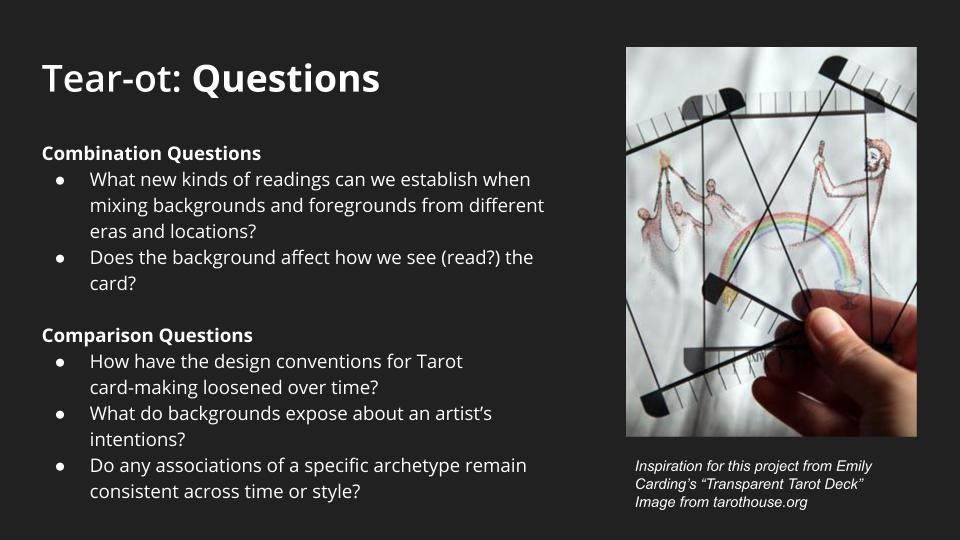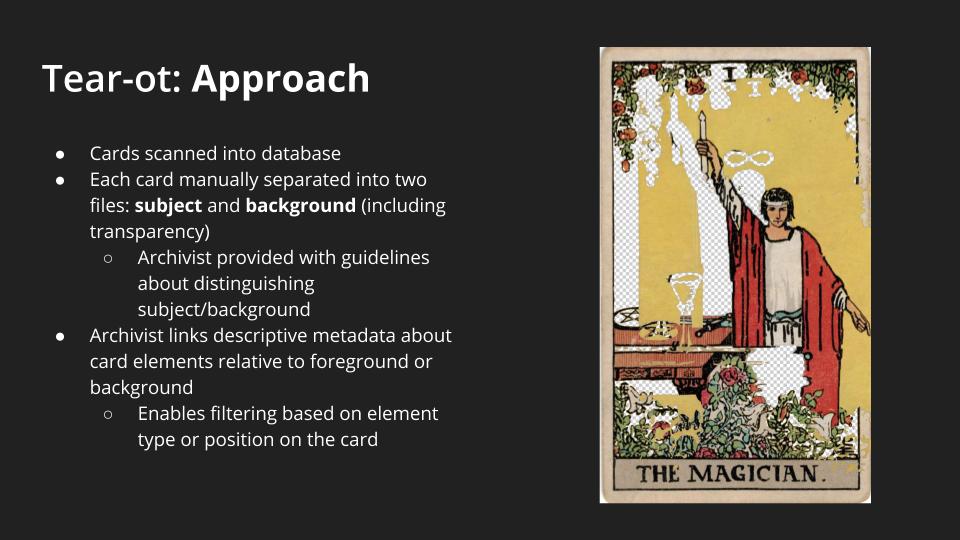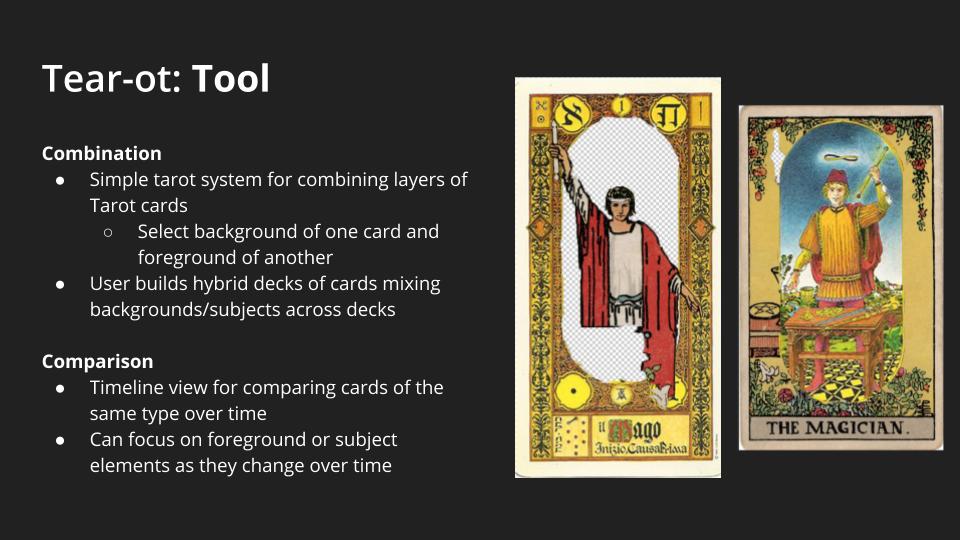Tear-ot
Background
Our goal is to isolate the subject of each tarot card from the corresponding background, which was inspired by Emily Carding’s Transparent Tarot set, allowing users to layer cards in order to create different types of narratives and see the cards in a new light. By enacting this separation, we will be able to create two versions of each card: one displaying only the subject and one consisting of its surroundings. These foregrounds and backgrounds could be later combined in new ways, creating new cards from across the collection. Isolating these aspects of the cards will illustrate the various associations that tarot artists have associated with each of the archetypes, as well as the way those associations have changed over time and across the collection. For each card, a user would be able to examine all the existing associations with a specific archetype, allowing for a better understanding of those specific cards and the collection more generally.
Combination Questions
- What new kinds of readings can we establish when mixing backgrounds and foregrounds from different eras and locations?
- Does the background affect how we see (read?) the card
Comparison Questions
- How have the design conventions for Tarot card-making loosened over time?
- What do backgrounds expose about an artist’s intentions?
- Do any associations of a specific archetype remain consistent across time or style? Do any cards have especially consistent or inconsistent associations?
Approach
The documentation process would first involve scanning all of the cards into a database. Each card would need to be then manually separated into two files, using a tool like Photoshop. An archivist would be separating the subject from the background elements, exporting two separate image files, which would need to be formatted to include transparency (rather than filling in the blank space with white or some other neutral color).
Deciding how one separates the background from the subject is ultimately a subjective decision. However, our guidelines suggest that one should remove the central figure from the image if the card typically describes a human (eg Page or Jack), or form which the card’s name describes (four of cups). This system would include a guide for typical separation systems that would apply to each card.
MIT’s contemporary collection of cards revealed that many cards do not follow this format exactly, so this system would give additional leeway for archivists who contribute more experimental decks to the database.
Archivists would then link the descriptive metadata about card elements relative to the foreground or background. This would enable users to filter based on both the element type and whether the element was found in the foreground or background of the card.
Tool
The tool for navigating this database would include two primary elements. First, it would offer a simple system for combining layers of Tarot cards, allowing a user to select the background of one card and the foreground of another. One version of this system could include the constraint that the cards to be combined would need to be of the same suit, or a more flexible system would allow card elements to be mixed across any suit. Users would then be able to build hybrid decks of cards that mix backgrounds and foregrounds across multiple card decks. One could easily select two entire decks to hybridize or instead could customize their deck and combine elements per-card. This viewing system would help users interrogate our combination questions. Furthermore, the tool would incorporate a simple system for comparing cards of the same type over time. This would take the form of a simple chronological timeline view which would allow the user to view either background or foreground elements spread horizontally. This viewing system would help users interrogate our comparison questions.
Audience
- Historians or other researchers interested in the development of tarot stylistics over time
- Tarot users or scholars interested in new readings of the cards
- Artists looking to create cards that either conform to or divert from existing norms in tarot
- Historians/scholars interested in tarot archetypes and their associations


